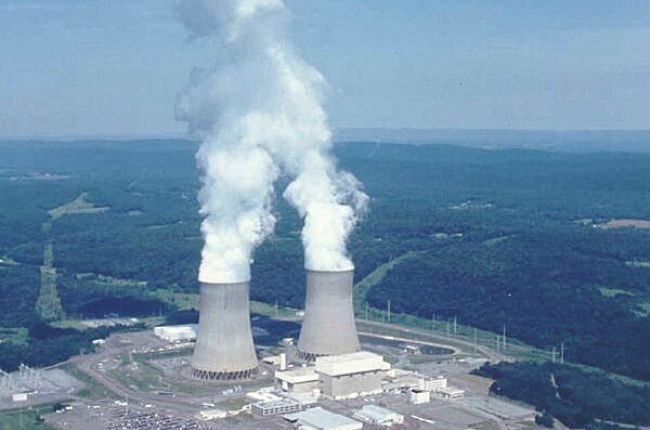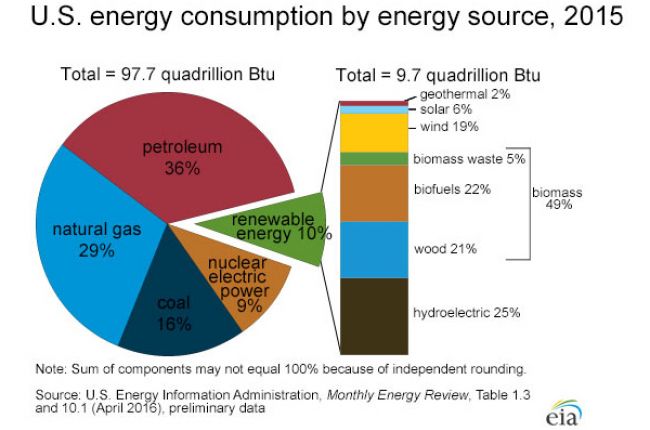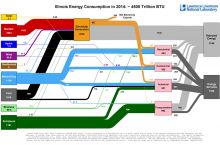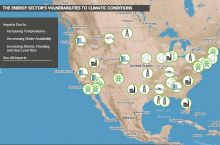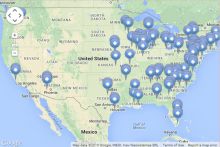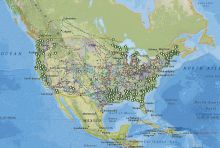Nuclear energy is released from the fission of heavy elements like uranium, a weakly radioactive metal found around the world. Fission splits large atoms into smaller atoms, releasing enormous amounts of energy. During electricity generation, the process of fission emits only water vapor but leaves behind spent fuel, which remains highly radioactive. Milling uranium, processing uranium into nuclear fuel, and operating nuclear power plants all create various types of nuclear waste, both low-level and high-level.
Why does nuclear energy matter?
The United States has used nuclear power since the mid-20th century. Nuclear energy makes up around 20% of U.S. electricity supply. There are currently 98 commercial nuclear reactors operating at 60 nuclear power plants in thirty states.[1][2]
How does geoscience help inform decisions about nuclear energy?
Geoscientists find and extract our supply of heavy elements like uranium. They evaluate the safety of nuclear power plants to withstand natural hazards such as earthquakes, floods, and tsunamis, and also play a central role in identifying safe options for short- and long-term management of nuclear wastes, including underground storage of spent-fuel and high-level waste.
References
1Nuclear Explained: U.S. Nuclear Industry, EIA, https://www.eia.gov/energyexplained/index.php?page=nuclear_use
2How many nuclear power plants are there in the United States, and where are they located? EIA, https://www.eia.gov/tools/faqs/faq.php?id=207&t=3
Learn More
Introductory Resources
- Nuclear Explained (Webpage), Energy Information Administration
This web article provides an overview of nuclear energy, uranium as a fuel for nuclear fission, the operation of U.S. nuclear power plants, the nuclear fuel cycle (uranium exploration, mining, milling, conversion, and enrichment, fuel use, and fuel disposal), uranium sources, status of the U.S. nuclear industry and power plants, and environmental impacts of nuclear power.
- What You Need to Know About Energy: Nuclear (Webpage), The National Academies
An overview of the role of nuclear energy in the United States, the benefits and disadvantages of nuclear, and opportunities and challenges for using nuclear energy in the future.
Resources for Educators
- Education Resources Network, AGI's Center for Geoscience & Society
Search for nuclear energy resources in: Curricula & Instruction, Teaching Media
- NGSS Performance Expectations, Next Generation Science Standards
K-ESS3-1, 4-ESS3-1, MS-ESS3-1, HS-ESS3-1, HS-ESS3-2, K-ESS2-2, 5-ESS3-1, MS-ESS3-3, MS-ESS3-4, HS-ESS3-3, HS-ESS3-4, HS-PS1-8
- NGSS Disciplinary Core Ideas, Next Generation Science Standards
ESS3.A, ESS3.C, PS1.C

